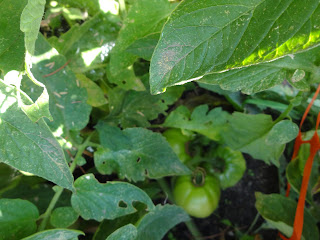By July, 2018 there was some excess space being wasted in the area where I had pulled some of the other carosello plants in the Fertile Garden, so I decided to utilize the excess capacity by growing a second batch of Carosello Tarantino.
By September, most plants around here begin showing signs of powdery mildew. I’m not exactly sure how to eliminate it, but it does seem to spread across one species of plant to another, so by the first of October, most every plant is experiencing its effects. I tried a mixture of things on the plants with limited success. I believe watered down milk may be as effective as most anything else.
In growing out this batch, I realized how similar it was to the Carosello Massafra. The similarities were so striking that I could really see no physical difference between something like a Carosello Massafra and this carosello. I decided that this was an undesirable trait and pulled the plants. The fruit was good, but there was no real reason to continue growing the plant for seed.
By September, most plants around here begin showing signs of powdery mildew. I’m not exactly sure how to eliminate it, but it does seem to spread across one species of plant to another, so by the first of October, most every plant is experiencing its effects. I tried a mixture of things on the plants with limited success. I believe watered down milk may be as effective as most anything else.
In growing out this batch, I realized how similar it was to the Carosello Massafra. The similarities were so striking that I could really see no physical difference between something like a Carosello Massafra and this carosello. I decided that this was an undesirable trait and pulled the plants. The fruit was good, but there was no real reason to continue growing the plant for seed.








































